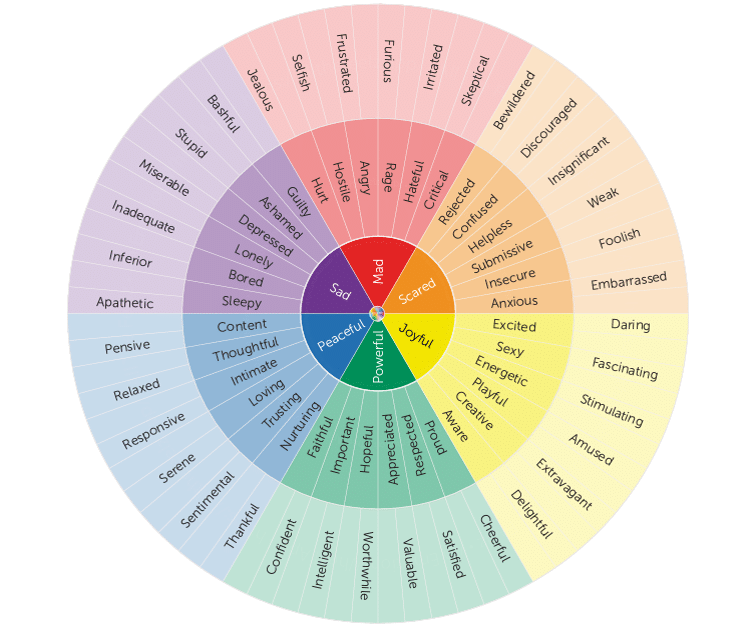How Common are Men’s Mental Health Issues?
Common! These stats are from Mental Health America, the Anxiety & Depression Association of America (ADAA), and the National Alliance on Mental Illness (NAMI). It presents a concerning picture:
Over 6 million men (about twice the population of Arkansas) suffer from depression each year.
Keep in mind, those are diagnosed and reported cases. Male depression often goes undiagnosed due to underreporting.
Over 40 million (approximately 19.1%) of American adults have an anxiety disorder.
That can include panic disorders, phobias, and generalized and social anxiety.
2.3 million Americans are affected by bipolar disorder.
An equal amount of men and women are diagnosed and the onset for men is between 16-25 years old.
Why Does Men’s Mental Health Carry Such a Stigma?
The topic of therapy is becoming more commonplace in social circles. However, even with the topic of therapy showing up in conversation more often, we can still “shy up” in and outside of therapy. Why is that? We all know that people have rough times throughout their lives so why do we have such a difficult time talking about it?
Ready to break the stigma? Get matched with the perfect therapist for you at one of our many clinics nationwide!
We all like to feel like we have our shit together.
There is merit and strength in being “put together” or “being able to handle things” on our own. It makes us feel secure, comfortable, and stable. In reality, we often tell ourselves these things to minimize our anxiety about feeling like a failure, feeling inadequate, and the thought of “everyone else has their shit under control – why don’t I?”
We do not want to feel “weak” or powerless.
There is the misconception in our society that going to therapy means that we are “giving up” or that we are not “strong enough.” Coming to therapy does not mean that we are weak, powerless, or incapable. It means that we are brave enough to admit that we need help and that we want to feel better for ourselves and the people around us. We want to perform better at work, be more stable in relationships, and get back to enjoying the things we used to enjoy.
We do not really know how.
Therapy and the attached stigmas are shrinking, but there is still much that a lot of us have not experienced. The generations before us had less experience in the expression of emotions and feelings and even less in attending therapy. The minimal experience gave them minimal abilities to teach this to generations after them. Experiencing difficulties with the expression of emotions and feelings is not uncommon and it can be difficult to start.
How Can We Change Our Perspectives and Help Men Get Started in Therapy?
First, we need to look at how we are talking about therapy and mental health to friends, partners, and children. Men are commonly subject to phrases such as: “Man up,” “Men don’t cry,” “Don’t be a wimp,” “Just get over it,” “It’s not that big of a deal.” While public sentiment toward these phrases is changing, the influence of those statements is still present. Statements like these can impact a man’s perception of their social standing in comparison to one another and increase the feelings of inadequacy that men may already be feeling. Those feelings of inadequacy are stacked on top of societal perceptions; men’s mental health significantly suffers.
To change this perception we can start by encouraging men to be more aware of how they present themselves to their children, young adults, and their own peers. By accepting the influence that is had on younger generations, men can be a part of the change for themselves, as well as their own future. Accepting the influence and sharing internal struggles can be scary and it can be an experience that is entirely new. Sharing emotions and feelings needs openness and vulnerability, which open ourselves to “dangers” that are out of our own control. Men are in a great position to challenge the perceptions about their mental health and the stigma attached to men’s mental health if we can help reframe sharing from “weakness” to power, courage, and bravery.
In addition, men seek therapy more often when they:
Understand that everyone can benefit from therapy.
Let’s face it, life is hard, it can range from “Damn, I spilled my coffee this morning,” to really sucking to sometimes feeling like we are hanging on by a thread. Men’s mental health struggles when the societal pressure to remain calm, cool, collected, and “have shit together” presents itself. By attending therapy, we can release those little stressors before they build up and snowball so we truly remain “calm, cool, and collected.” Who doesn’t want to be chill?
Recognize that therapy is not always about those “deep and dark” places in our lives.
Therapy is often presented as a space where our dark side comes out, where we bare our souls, and admit weaknesses, failures, guilt, and shame. While that is all true, therapy is not always like that! It is also a space to talk about progress, successes, and exciting futures. We can engage in positive self-talk, talk about how we are kicking life in the ass, and continue to get encouragement from a therapist.
Present the areas of men’s lives where therapy can be beneficial like the understanding of empathy, emotions, and everyday life.
- Therapy is a place to gain skills for living a healthier, more productive, and happier life with those around you. This can translate to improving our interpersonal relationships, business relationships, and performance in every aspect of our lives through the understanding of the human experience.
Here are two quick, simple tools that men seeking therapy (or anyone!) can use while waiting to begin therapy services:
- The Anger Iceberg. Men seeking therapy often describe and share “anger problems” and feel in a spot where they “cannot control emotions.” While anger is a feeling word, it is often just the external expression of a different internal emotion. The Anger Iceberg (coined by the Gottman Institute) is the concept that they are smaller on the top and much larger under the water’s surface (just the tip of the iceberg!).
Anger is the “tip”. Think about the word hangry. It’s commonly used to refer to the quick, sometimes unpleasant reaction we have when we experience hunger so deeply it impacts our mood. Often, the external result of anger can come from a deeper, internal emotion like fear, jealous, exhausted, nervous, or many more.
So, how should men use this, what’s the tip? If you hear a man labeled “angry,” or are yourself – ask, “what emotion am I feeling that is resulting in this expression of anger?” If it is hunger, the solution to the problem is to get some food and not for us to “calm down.” The same goes for an emotion like exhaustion, the solution is not “calm down,” it is to get some rest and do something that gives you energy.
- The Feelings Wheel. Gloria Wilcox developed a “simplified” understanding and method to expressing depths of emotions outside of “core” emotions like happy, sad, and angry called “The Feelings Wheel” (this is a different conceptualization of Robert Plutchik’s “Emotion Wheel”). Below is a picture of Wilcox’s version.
To utilize the feelings wheel, pick an emotion closest to how you are feeling at the current moment, and then move outwards. Or skip the middleman and go right for the edges! By describing emotions more in depth, our support systems or self-understanding can be better equipped on how to offer insight, clarity, and perspective on how to move forward.

Gloria Willcox (1982) The Feeling Wheel, Transactional Analysis Journal, 12:4, 274-276, DOI: 10.1177/036215378201200411


